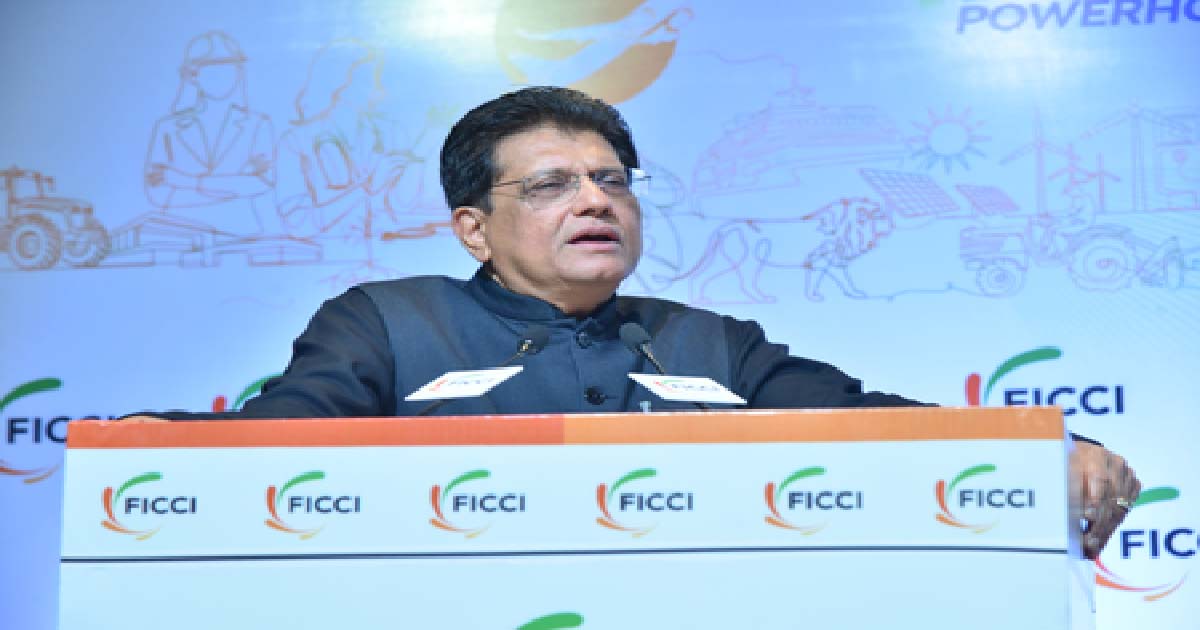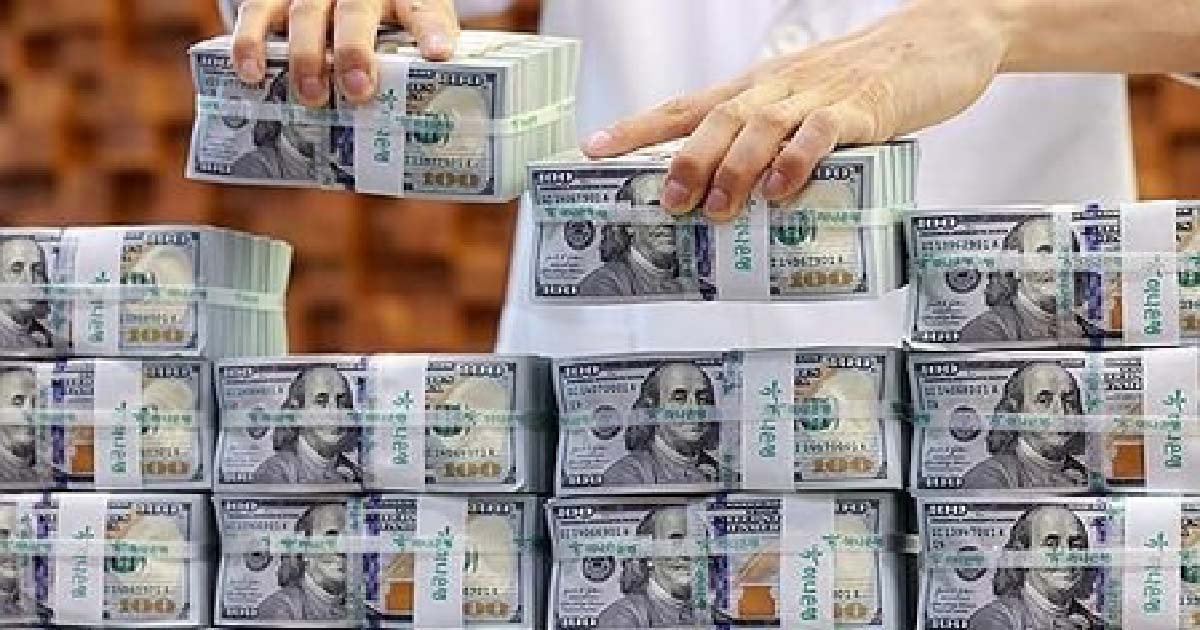Business
Sanjiv Puri’s ‘ITC Next’ strategy to drive into commanding position in FMCG industry market
Powered by mega brands such as Aashirvaad, Sunfeast, Bingo!, Classmate, and Savlon, ITC is set to drive into a commanding position in what some analysts have estimated to be a Rs 5 lakh crore addressable FMCG industry market segment by 2035, with Chairman Sanjiv Puri putting in motion a carefully crafted ‘ITC Next’ strategy.
This re-crafted strategy, built around portfolio revitalisation, rapid platform-based innovation, aggressive digitisation, deeper synergies with other group businesses, structural leverages and a sharper focus on margins.
As an FMCG major, ITC is the only company that is dominant across a range of product categories from branded atta to biscuits; snacks to spices; noodles to dairy; chocolates to coffee; juices to frozen snacks and vegetables; deodorants to hand and body wash; sanitizers and masks to floor cleaners; and from notebooks to agarbatti, that none of the other Indian or multinational brands can claim to be present in.
Puri’s ‘ITC Next’ strategy pivots around a multi-pronged approach to revitalize the company’s current FMCG portfolio by fortifying and scaling up its proven megabrands, leveraging adjacencies through horizontal brand extensions, and nurturing new platforms with innovative products that will scale up to be leaders in their respective categories.
Mega brands and adjacencies
ITC has a plethora of megabrands such as Aashirvaad, Sunfeast, Bingo! and Classmate that already command leadership positions in the market.
The strategy of creating value added adjacencies could be best illustrated by the new Aashirvaad portfolio including Aashirvaad Nature’s Super Foods range comprising ragi flour, multi-millet mix, gluten free flour, organic atta and pulses as well as chapatis, instant meals and the Aashirvaad Svasti dairy range.
ITC is also fostering new platforms and strengthening its new brands including Fabelle chocolates, Sunbean coffee, B Natural juices, Nimyle home cleaners, Savlon hygiene products and so on. The overarching strategy for new platforms of innovative products is to first validate the concept and business model in select beachheads. Having gained a dominant market penetration, these new lines of products and brands will gain strength to occupy adjacent markets with different opportunities, building a larger brand with each new product, creating new and steady vectors of growth for the future.
ITC under Puri is unwavering in its resolve to build a formidable FMCG business. With innovation as the new lifeblood, the company today is one of the largest incubators of world-class Indian brands.
The Company’s wide range of FMCG portfolio has demonstrable headroom to expand rapidly in the FMCG industry overall addressable market segment of Rs 5 lakh crore.
For instance, the total size of the packaged snacksmarket for the overall industry is set to vault 4.5 times from about Rs 32,000 crore to an estimated Rs 1.43 lakh crore by 2035. The market for overall spices industry is projected to grow from about Rs 22,000 crore currently to Rs 1.1 lakh crore in 15 years, a growth of five times. Similar industry growths are expected in other categories such as biscuits, branded atta, noodles, deodorants, personal care products and the cleaners categories.
Most of ITC’s FMCG products occupy the first or the second positions in their respective categories giving them unique opportunity to corner most of these segment growths.
Aashirvaad, India’s number one branded packaged atta, itself has a consumer spend of over Rs 6,000 crore.
Digital, consumer-centric and future-ready
Puri’s strategy to make ITC future-ready manifests in his focus on driving the three megatrends emerging out of the pandemic – innovation, digitalisation and sustainability. The Company’s R& D Centre, the ITC Life Sciences and Technology Centre (LSTC) in Bengaluru helped ITC to launch 120 differentiated products amid the pandemic to meet emerging preferences. To further support this goal, the company has set up 9 state-of-the-art integrated consumer goods manufacturing facilities (ICML) to create structural advantages.
Digitalisation is being accelerated pan-ITC through the use of new technologies such as Industry 4.0, Artificial Intelligence, Machine Learning, Big Data, Industrial Internet of Things (IoT), etc. These technologies are also being deployed across the entire supply chain spanning sourcing, manufacturing, trade engagements and e-commerce, including its own ordering platform the ITC e-store. The FMCG business has further driven enhanced competitiveness through a multi-channel distribution strategy which have been strengthened by-customised apps.
Power of Synergies
The ‘ITC Next’ FMCG strategy has also been bolstered by synergies flowing in from the company’s other businesses.
A good example of synergies is ITC’s foods business deriving a significant competitive advantage from agribusiness’s sourcing capabilities. The culinary expertise of ITC’s Hotels business has also enabled ITC to craft differentiated food offerings.
Stronger growth, better margins
The robustness of Puri’s strategy for FMCG is evident from the segment EBIDTA (earnings before interest, taxes, depreciation and amortisation) increasing by by 82 per cent this Q2 from Q2 FY 20, as outlined in ITC’s second quarter financial results.
The FMCG businesses have been posting steady growth ahead of industry peers. During the last four years, ITC’s revenue from FMCG increased from around Rs 10,500 crore to nearly Rs 15,000 crore.
ITC’s FMCG business during 2020-21 grew 16 per cent versus the industry average of 8.5 per cent.
There has also been a steady improvement in profitability in the FMCG segment, with EBITDA margins having improved by more than 640 basis points between 2016-17 and 2020-21.
‘ITC Next’ strategy for other businesses
In August, at the company’s annual general meeting, Puri unveiled the extensive ‘ITC Next’ strategy to architect the structural drivers that will power ITC’s next horizon of growth and ensure that the enterprise remains future-oriented, consumer-centric and nimble.
ITC’s other businesses too have pivoted to create new frontiers for the future, with enhanced competitiveness as well as sharper focus on cost management to strengthen leadership or rapidly attain the top positions in the case of newer segments.
Some of the key drivers of growth, as identified by Puri, for ITC’s other businesses include an asset right strategy for Hotels powered by a repositioned WelcomHotel brand as well as newly launched brands such as The Storii and Mementos done with management contracts. Two management contracts have already been signed under the Mementos brand.
Similarly, in the Paperboards business, the company is concentrating on sustainable packaging and value-added paper, while in agriusiness, the emphasis is on Next Generation agriculture driven by the ‘super app’ ITC MAARS and value-added agriculture.
Special strategic thrust is also being provided to ITC Infotech, the wholly owned subsidiary which is on a strong growth and profitability trajectory over the last few years.
Business
India in talks with 50 nations on fair trade deals: Piyush Goyal

New Delhi, Nov 28: Commerce and Industry Minister Piyush Goyal said on Friday that India is currently engaged in discussions on fair and balanced trade deals with 14 countries or groups representing nearly 50 nations, including the United States, the European Union, GCC countries, New Zealand, Israel, Eurasia, Canada, South Africa and the Mercosur group.
Addressing the annual general meeting of the Federation of Indian Chambers of Commerce and Industry (FICCI) here, the minister underlined that balanced and equitable trade agreements have already been concluded with Australia, the UAE, Mauritius, the United Kingdom and the four-nation EFTA bloc.
Highlighting broader global developments, the minister said that recent geopolitical and economic challenges have underscored the need for trusted partners and resilient supply chains. He stated that India’s expanding network of free trade agreements (FTAs) and economic partnerships is aimed at building long-term cooperation anchored in fairness, transparency and mutual benefit.
Goyal said that the idea of self-reliance is central in India’s civilisational ethos, recalling references from the Bhagavad Gita and Mahatma Gandhi’s emphasis on Swadeshi. He said that self-reliance has historically guided India’s progress and continues to remain central to the country’s economic strategy. He added that this vision has been strengthened through the focus on Atmanirbhar Bharat under the leadership of Prime Minister Narendra Modi.
Referring to the recent EFTA agreement, the minister noted that the bloc has committed to invest $100 billion in India across innovation and precision manufacturing. He underscored India’s cost competitiveness in research and innovation, stating that high-quality innovation undertaken in India can be achieved at a fraction of the cost compared to Europe or the United States.
The Minister highlighted India’s strengths in innovation and technology, supported by a young demographic, increasing digital adoption and a growing talent pool. He said that India’s large number of STEM graduates and widespread internet access create strong potential in emerging areas such as applied artificial intelligence, automation, robotics and deep-tech innovation.
He noted that the recently announced $12 billion Research, Development and Innovation (RDI) fund, along with ongoing support to startups and deep-tech industries, will further accelerate India’s innovation ecosystem.
Goyal emphasised the importance of strengthening skilling to prepare India’s youth for future opportunities. He said that unlike many developed economies facing ageing populations, India’s youthful demographic is quick to adapt to emerging technologies and has already demonstrated high engagement with digital platforms. He added that this readiness positions India to play a major role in the global technology landscape.
The minister outlined India’s strengths through the ‘PESTLE’ framework, noting that Prime Minister Modi has consistently advanced the vision of self-reliance across sectors. He said that politically, a stable and predictable government committed to “Minimum Government, Maximum Governance” has enhanced investor confidence. In the economic domain, initiatives such as the National Manufacturing Mission and the Rs 25,000 crore Export Promotion Mission are supporting India’s rise towards becoming the world’s third-largest economy.
On the social front, he highlighted that the four Labour Codes ensure better wages and protections, while the Antyodaya approach has supported the fulfilment of basic needs.
In the technology sector, Goyal pointed to initiatives aimed at reducing external dependence, including the Semiconductor Mission (Rs 76,000 crore) and the Rs 7,000 crore programme for permanent magnet production, which strengthen domestic manufacturing and supply chain security. In the legal domain, he referred to ongoing reforms, including progress toward Jan Vishwas 3.0, designed to enhance ease of doing business.
He further noted that the ‘Atomic Energy Bill 2025’ marks a historic shift by opening up the nuclear sector to strengthen energy sovereignty.
The Minister urged FICCI to adopt a mission-driven approach to promoting innovation, deepening research and development, strengthening industry-academia linkages and supporting India’s journey towards becoming a developed nation by 2047.
Business
India projected to log 7 pc GDP growth in 2025: Report

New Delhi, Nov 28: Ahead of India’s Q2 GDP numbers on Friday, Moody’s Ratings said that the country is projected to clock 7 per cent GDP growth in 2025 and 6.4 per cent in 2026 due to domestic growth and economic resilience amid global disruptions.
The country will lead growth among emerging markets and in the Asia Pacific (APAC) region, said the global rating agency. “India will lead growth among emerging markets and across the region, with GDP growing 7 per cent in 2025 and 6.4 per cent in 2026,” according to a note by Moody’s Ratings.
The average GDP growth in APAC is projected to remain steady at 3.4 per cent in 2026, compared to expected growth of 3.6 per cent in 2025.
According to the rating agency, emerging markets will drive GDP growth in the region, with average growth of 5.6 per cent.
In September, Moody’s Ratings affirmed India’s long-term local and foreign-currency issuer ratings and the local-currency senior unsecured rating at Baa3. The global ratings agency has also maintained its outlook for India as stable.
“The rating affirmation and stable outlook reflect our view that India’s prevailing credit strengths, including its large, fast-growing economy, sound external position and stable domestic financing base for ongoing fiscal deficits, will be sustained,” Moody’s said in its note.
The rating agency has said that the US’ imposition of high tariffs on India will have limited negative effects on India’s economic growth in the near term. “However, it may constrain potential growth over the medium to long term by hindering India’s ambitions to develop a higher value-added export manufacturing sector,” said the rating agency.
India’s credit strength is balanced by long-standing weaknesses on the fiscal side which will remain. Strong GDP growth and gradual fiscal consolidation will lead to an only very gradual decline in the government’s high debt burden, and will not be sufficient to materially improve weak debt affordability, especially as recent fiscal measures to reinforce private consumption erode the government’s revenue base, according to the note.
Business
Foreign currency deposits in S. Korea post biggest drop in nearly 2 yrs in Oct

Seoul, Nov 28: Foreign currency deposits in South Korea declined by the most in about two years in October amid increased corporate repayment of foreign-currency borrowings and overseas investments by pension funds, central bank data showed on Friday.
Outstanding foreign currency-denominated deposits held by residents came to $101.83 billion as of end-October, down $5.26 billion from a month earlier, according to data from the Bank of Korea (BOK), Media reports.
It marked the sharpest monthly fall since January 2024, when deposits declined by $5.78 billion, and the second straight month of decrease.
Residents include South Korean citizens, foreigners who have lived in the country for more than six months, and foreign companies. The data excludes interbank deposits.
“The decline was due mainly to companies’ repayment of foreign-currency borrowings, a drop in investor deposits at securities firms and overseas investment executions by pension funds, among other factors,” a BOK official said.
Corporate foreign currency deposits fell $5.5 billion on-month to $86.76 billion, while individual holdings gained $240 million to $15.07 billion.
By currency, U.S. dollar-denominated deposits dropped $5.08 billion to $85.63 billion, and Japanese yen deposits fell $260 million to $8.63 billion.
Euro deposits were nearly unchanged at $5.01 billion, while Chinese yuan deposits increased $60 million to $1.25 billion, the data showed.
Meanwhile, South Korean stocks traded sharply lower late Friday morning as investors dumped tech shares amid lingering uncertainties over artificial intelligence (AI) technology.
The benchmark Korea Composite Stock Price Index (KOSPI) lost 39.81 points, or 1 per cent, to 3,947.1, as of 11:20 a.m.
Most shares traded in negative territory. Market bellwether Samsung Electronics sank 1.93 percent, and SK hynix fell 0.74 per cent.
Top carmaker Hyundai Motor retreated 0.19 percent, and its sister Kia dropped 0.26 per cent.
Leading battery maker LG Energy Solution tumbled 5.94 per cent, and defense giant Hanwha Aerospace declined 2.2 per cent.
The local currency was quoted at 1,465.5 won against the greenback as of 11:20 a.m., down 0.25 won from the previous session’s close.
-

 Crime3 years ago
Crime3 years agoClass 10 student jumps to death in Jaipur
-

 Maharashtra1 year ago
Maharashtra1 year agoMumbai Local Train Update: Central Railway’s New Timetable Comes Into Effect; Check Full List Of Revised Timings & Stations
-

 Maharashtra1 year ago
Maharashtra1 year agoMumbai To Go Toll-Free Tonight! Maharashtra Govt Announces Complete Toll Waiver For Light Motor Vehicles At All 5 Entry Points Of City
-

 Maharashtra1 year ago
Maharashtra1 year agoFalse photo of Imtiaz Jaleel’s rally, exposing the fooling conspiracy
-

 National News1 year ago
National News1 year agoMinistry of Railways rolls out Special Drive 4.0 with focus on digitisation, cleanliness, inclusiveness and grievance redressal
-

 Maharashtra1 year ago
Maharashtra1 year agoMaharashtra Elections 2024: Mumbai Metro & BEST Services Extended Till Midnight On Voting Day
-

 National News1 year ago
National News1 year agoJ&K: 4 Jawans Killed, 28 Injured After Bus Carrying BSF Personnel For Poll Duty Falls Into Gorge In Budgam; Terrifying Visuals Surface
-

 Crime1 year ago
Crime1 year agoBaba Siddique Murder: Mumbai Police Unable To Get Lawrence Bishnoi Custody Due To Home Ministry Order, Says Report












